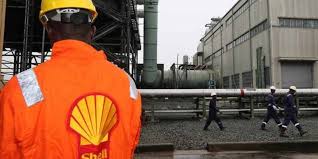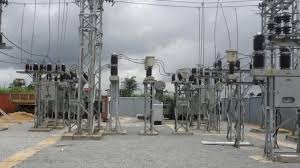Oil & Energy
Gas Flaring: Can Oil Firms Meet 2012 Deadline?
It is no longer news that gas is becoming much more important to Nigeria’s economy since its production began years ago. Since its discovery, many companies have set up operations in the country but the flaring of the product has posed a very high challenge as it is not properly utilised for the benefits of the economy.
It is against this backdrop that the Nigerian government deems it necessary to develop gas resources to supply it for the provision of sufficient electricity for domestic and industrial use as well as for exportation. The nation’s power plants are not functioning adequately to generate required electricity and cannot meet domestic demand to end blackouts which now become a political priority.
The government is currently planning to produce enough gas to export as soon as gas flaring is ended in the country and also bring the President’s gas-to-power scheme to fruition.
The last House of Representatives before exist perfected the legislative framework pegging the deadline for gas flaring in Nigeria’s petroleum sector at December 31, 2012 in realisation of the government’s plan to develop and capture gas that is being flared or burned off in parts of the country, especially the oil producing areas. Some million cubic feet of gas resources are being flared daily and the quality is sufficient to generate about 4, 500 megawatts of power. The House also imposed stiff penalties on oil firms that may flout new regulation s on gas flaring.
The action of the House of Representatives followed the adoption of the report of its committee on gas resources on a bill for an Act to Amend the Associated Gas Reinjection Act No. 99 of 1999 Cap. A25 Laws of the Federation of Nigeria Further Amendment of the gas flare deadline is not among the many legislative responsibilities before the present House of Representatives.
Oil companies operating in the country had failed to meet the Federal Government’s umpteenth time shifted deadline for the anti-safety and environment Act, under which violators are meant to be penalised. The end of this year is the battle line for gas flaring to end in this country but the question now is, can the oil companies meet the deadline? It is gathered that the President Goodluck Jonathan-led administration which will be empowered by the Petroleum Industry Bill (PIB) may not allow the continuation of the flaring beyond this year, so it is in the best interest of oil companies to race towards meeting the deadline.
Nigeria is currently making progress towards optimising its gas and power industries and that has been the focus of the government. The Group Managing Director of the Nigerian National Petroleum Corporation (NNPC), Austin Oniwon is quoted as assuring that the Gas Revolution programme for the country would not be abandoned and that to this end, two Memoranda of Understanding (MoU) had been signed. One between Xenel and NNPC and the other among India’s Nagarjuna Fertilisers, NNPC and Chevron as well as the award of the Akwa Ibom/Calabar area gas Control Progressing Facility (CPF) to Agip and Oando in Abuja, to show how serious and committed NNPC and government are to the Gas Revolution Programme.
In pursuance of the programme, the Brass Liquefied Natural Gas plant is put in place for the production of gas in greater quantity and transmission.
The president is very passionate about the project and the journey has started. We do know that we have large deposit of natural gas resources. Before now, most of the product was being wasted through flaring because of the system we adopted, but with what is happening now, that will change.
Just like the crude oil, natural gas is money, so there should be a concerted effort to commit this natural resources into money for the benefit of Nigerians. The status report of the Nigerian Gas Masterplan, if sincerely and optimally implemented in line with the gas-to-power framework, will support the president’s power agenda and make power available for many ‘dead’ industries to come back to life. Not only that, it will also provide gas as fuel for industries such as the textile mills in Kano and Kaduna that went down because of lack of fuel and they will be able to have clean, cheap and affordable fuel to run their business.
In its commitment to ending routine gas flaring and consolidating leadership position in the domestic gas market, the Shell Petroleum Development Company (SPDC) has said it will continue to make good progress in bringing projects that will reduce flares and boost gas supply to the domestic market as well as sustain economic growth and kick-start new industries that will provide jobs for Nigerians.
Ending gas flaring in the country should be a long-term programme and there must be continuing commitment on the part of the oil companies because the project will help the economy and generate billions of naira or dollars to enhance development funding. Nigeria holds about 8 per cent of global proven natural gas reserves and about 10 per cent of proven oil reserves but for Nigeria to continue to attract international investments, it needs to sustain confidence and stability and respect the sanctity of contracts.
There is ambition and expectation in the gas sector, but there is also uncertainty about who is going to gain and who is going to lose now that the federal Government is gearing efforts towards optimal utility of our gas resources. Nigerians are scared at the rate things are going in the country and people are no longer interested in the way funds are managed as they want to see practical things on ground.
Our social set-up has been shaken and we are yet to come to terms with it. Other countries use their funds to develop the people by providing infrastructure and social amenities but Nigeria’s case is different and not sure to understand. President Goodluck Jonathan has launched the “Roadmap for the power sector reform, so great majority of Nigerians are waiting for dramatic improvements to their quality of life. More gas and more power will raise living standards and support the economy, so lessons should be drawn from countries that have successfully executed gas-to-power and gas industry optimisation reforms with a view to enabling Nigeria learn from and possibly replicate the best practices of these countries.
Because the expectations of government and the societies they represent evolve over time, it is inappropriate to expect that what was obtaining when the oil and gas industry was at its infancy, 50 years ago would still be obtainable today. This follows that with both the socio-political climate and the oil and gas industry changing, the International Oil Companies/National Oil Companies relationship must also evolve. A lot of things are expected when changes occur. This is why the Federal Government should ensure that all recommendations made to it are fully implemented to engender growth and change in the oil/gas industry.
To make the whole dream come true, the partnership between international oil companies and national oil companies needs to be strengthened to enhance the full exploitation of natural resources and develop capability that will bring more value to the industry. The basis of mutual benefit should exist between the two or more parties.
Nigeria has been finding it difficult to maximize its gas-to power potential because of certain factors which create imbalances in the value chain, which include gas pricing. That is why the new price regime put in place by the federal government is commendable as it will give investors reasonable returns on their investments and allow those who build gas transmission infrastructure to achieve certain returns that would justify their investments. In Nigeria, the gas price before 2010 was put at less than $1 per million scf, but with the recent review of the price, which is about $2 per million scf for the domestic gas-to-power, the gap between the international and our local price has been narrowed and with that, people can now invest in gas development.
When there are opportunities for people to invest in gas development and power distribution and generation then the private sector would be able to take control of gas and power, and that will be the right way to guarantee power supply in the country.
The government should try to address the issue of regulation for the downstream gas sector which has become the bane of the sector’s development. The regulation must take into consideration the non and partial deregulation and closed access of gas infrastructure, while other issues bordering on security in operational communities should also be visited as well. There is the need to do this because it has been discovered that the problem of insecurity is causing extra expenditure for most oil and gas companies as most engineering, procurement and construction (EPC) contractors also use this as reason for their premium and prohibitive charges.
As soon as government’s increased focus on appropriate pricing is welcomed, it should further extend the focus to the full value chain rather than restricting it to the upstream argument alone. If there is gas in the country, which we know,we, the indigenes should benefit more than everybody else. The rate of economy growth is expected to double from what it has been over the years when gas flaring ends at the end of this year. Not just foreign or intentional oil companies should participate in the gas project but indigenous firms should be given priority consideration. The gas-to-power distribution is a boost the country badly needs, so there must be a corrupt-free national strategy for managing the gas revenues because the worry about monies generated from the oil and gas sector in the country is the ‘curse’ of embezzlement and misappropriation or mismanagement, ie, the judicious utilisation of funds accruing from the sector for the benefit of the ordinary citizens rather than using it to fuel conflict and corruption.
We hope we will avoid the mistakes.
Nigeria is a democracy and everybody is watching. So it is expected that there is going to be improvement when gas flaring will become a thing of the past by December 31, 2012.
With a proven reserves of 182 tonnes per cubic feet, Nigeria is adjudged the world’s seventh largest producers of high grade gas with zero per cent sulphur and rich in natural gas liquids. Though the huge reserve has not translated to abundant domestic supply, investment in gas distribution is capable of helping to achieve the gas-to-power aspiration of the federal government and make gas readily available to industrial consumers and guarantee accelerated growth of manufacturing and power sectors.
Shedie Okpara
Oil & Energy
Nigeria Loses More Crude Oil Than Some OPEC Members – Nwoko

Nigeria’s losses due to crude oil theft has been said to be more significant than those of some other members of the Organisation of Petroleum Exporting Countries(OPEC).
The Chairman, Senate Ad- hoc Committee on Crude Oil Theft, Senator Ned Nwoko, made this known in an interview with newsmen in Abuja.
Nwoko noted with dismay the detrimental impact of the issue, which, he said include economic damage, environmental destruction, and its impact on host communities.
According to him, the theft was not only weakening the Naira, but also depriving the nation of vital revenue needed for infrastructure, healthcare, education and social development.
The Senator representing Delta North Senatorial District described the scale of the theft as staggering, with reports indicating losses of over 200,000 barrels per day.
Nwoko disclosed that the ad hoc committee on Crude Oil Theft, which he chairs, recently had a two-day public hearing on the rampant theft of crude oil through illegal bunkering, pipeline vandalism, and the systemic gaps in the regulation and surveillance of the nation’s petroleum resources.
According to him, the public hearing was a pivotal step in addressing one of the most pressing challenges facing the nation.
‘’Nigeria loses billions of dollars annually to crude oil theft. This is severely undermining our economy, weakening the Naira and depriving the nation of vital revenue needed for infrastructure, healthcare, education, and social development.
‘’The scale of this theft is staggering, with reports indicating losses of over 200,000 barrels per day more than some OPEC member nations produce.
‘’This criminal enterprise fuels corruption, funds illegal activities and devastates our environment through spills and pollution.
‘’The public hearing was not just another talk shop; it was a decisive platform to uncover the root causes of crude oil theft, bunkering and pipeline vandalism.
‘’It was a platform to evaluate the effectiveness of existing surveillance, monitoring, and enforcement mechanisms; Identify regulatory and legislative gaps that enable these crimes to thrive.
‘’It was also to engage stakeholders, security agencies, host communities, oil companies, regulators, and experts to proffer actionable solutions; and strengthen legal frameworks to ensure stricter penalties and more efficient prosecution of offenders”, he said.
Nwoko noted that Nigeria’s survival depended
Oil & Energy
Tap Into Offshore Oil, Gas Opportunities, SNEPCO Urges Companies

Shell Nigeria Exploration and Production Company Ltd. (SNEPCo) has called on Nigerian companies to position themselves strategically to take full advantage of the growing opportunities in upcoming offshore and shallow water oil and gas projects.
The Managing Director, SNEPCO, Ronald Adams, made the call at the 5th Nigerian Oil and Gas Opportunity Fair (NOGOF) Conference, held in Yenagoa, Bayelsa State, last Thursday.
Adams highlighted the major projects, including Bonga Southwest Aparo, Bonga North, and the Bonga Main Life Extension, as key areas where Nigerian businesses can grow their capacity and increase their involvement.
“Shell Nigeria Exploration and Production Company Ltd. (SNEPCo) says Nigerian companies have a lot to benefit if they are prepared to take advantage of more opportunities in its offshore and shallow water oil and gas projects.
“Projects such as Bonga Southwest Aparo, Bonga North and Bonga Main Life Extension could grow Nigerian businesses and improve their expertise if they applied themselves seriously to executing higher value contracts”, Adams stated.
Adams noted that SNEPCo pioneered Nigeria’s deepwater oil exploration with the Bonga development and has since played a key role in growing local industry capacity.
He emphasized that Nigerian businesses could expand in key areas like logistics, drilling, and the construction of vital equipment such as subsea systems, mooring units, and gas processing facilities.
The SNEPCO boss explained that since production began at the Bonga field in 2005, SNEPCo has worked closely with Nigerian contractors to build systems and develop a skilled workforce capable of delivering projects safely, on time, and within budget both in Nigeria and across West Africa.
According to him, this long-term support has enabled local firms to take on key roles in managing the Bonga Floating, Production, Storage and Offloading (FPSO) vessel, which reached a major milestone by producing its one-billion barrel of oil on February 3, 2023.
Oil & Energy
Administrator Assures Community Of Improved Power Supply

The Emohua Local Government Area Administrator, Franklin Ajinwo, has pledged to improve electricity distribution in Oduoha Ogbakiri and its environs.
Ajinwo made the pledge recently while playing host in a courtesy visit to the Oduoha Ogbakiri Wezina Council of Chiefs, in his office in Rumuakunde.
He stated that arrangements are underway to enhance available power, reduce frequent outages, and promote steady electricity supply.
The move, he said, was aimed at boosting small and medium-scale businesses in the area.
“The essence of power is not just to have light at night. It’s for those who can use it to enhance their businesses”, he said.
The Administrator, who commended the peaceful nature of Ogbakiri people, urged the Chiefs to continue in promoting peace and stability, saying “meaningful development can only thrive in a peaceful environment”.
He also charged the Chiefs to protect existing infrastructure while promising to address the challenges faced by the community.
Earlier, the Oduoha Ogbakiri Wezina Council of Chiefs, led by HRH Eze Goodluck Mekwa Eleni Ekenta XV, expressed gratitude to the Administrator over his appointment and pledged their support to his administration.
The chiefs highlighted challenges facing the community to include incessant power outage, need for new transformers, and the completion of Community Secondary School, Oduoha.
The visit underscored the community’s expectations from the LGA administration.
With Ajinwo’s assurance of enhancing electricity distribution and promoting development, the people of Oduoha Ogbakiri said they look forward to a brighter future.
By: King Onunwor
-
Rivers2 days ago
HOS Tasks Rural Dwellers On RAAMP … As Project Sensitization Team Visit Degema, AKULGA
-

 News1 day ago
News1 day agoSenate Replaces Natasha As Committee Chairman
-
Opinion2 days ago
Checking Herdsmen Rampage
-

 Niger Delta1 day ago
Niger Delta1 day agoHYPREP Trains Lab Technicians To Standardise Water Quality In Ogoniland
-
News2 days ago
Tinubu, Govs Forum Congratulate Okpebholo On S’Court Victory …As Obaseki Expresses Disappointment
-
Politics2 days ago
Lagos LG Polls: Police Restrict Movement, Tightens Security
-
Rivers1 day ago
VALVA Restates Commitment Education Advancement, Literacy In Nigeria
-
Politics2 days ago
Obey Order On AA In Six Days, Court Directs INEC, Yakubu

